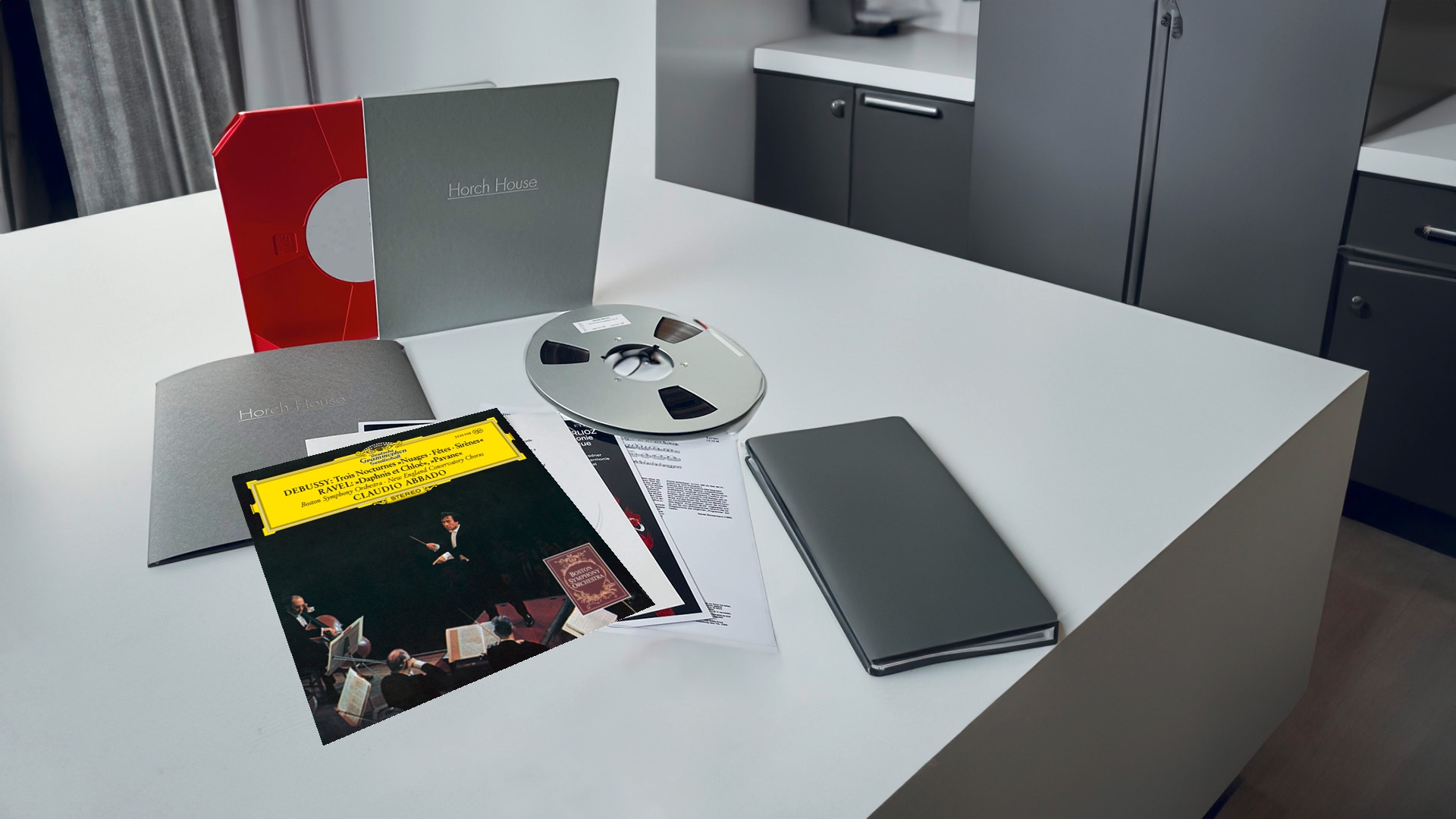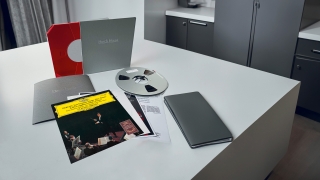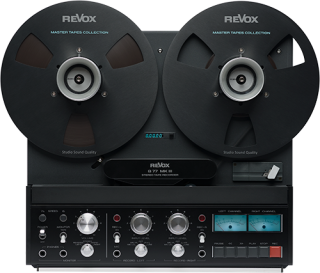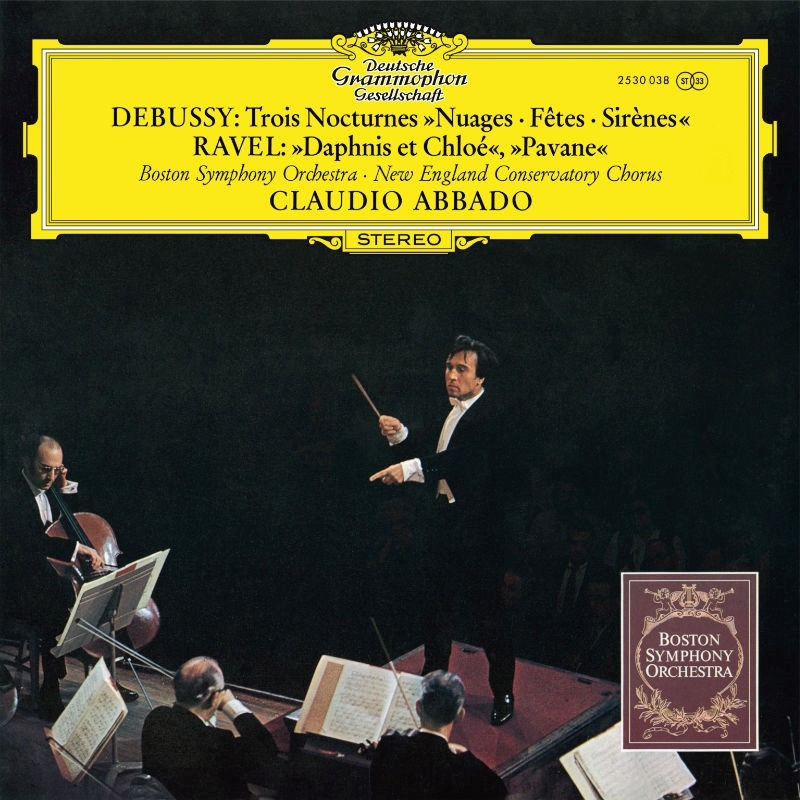

Debussy – Trois Nocturnes – Ravel – Daphnis et Chloé
1 Tape Production - 1/4" - 2 Track - RTM LPR90 - 15IPS - 38cm/sec - CCIR - 320 nWb/m - 1 x Metal Reel - 1 x Special Archive Box - Horch House Deluxe Packaging
The Boston Symphony Orchestra conducted by Claudio Abbado
Claude Debussy - Trois Nocturnes
The music of Claude Debussy has so often been paired with the art of the impressionist painters that it is almost upsetting to know that the composer himself, for a time at least, had other tastes. In 1899, shortly before the time he began work on the Three Nocturnes for orchestra, Debussy, in answering one of the then fashionable questionnaires on personal tastes, declared his favorite painters to be Botticelli and Gustave Moreau. A strange choice? Not when we remember that among the artistic currents of the time were pre-Raphaelitism and art nouveau, and Debussy was as much involved with them as with Impressionism. One thing in particular which he shared with the former was the idea of "the divine arabesque", the concept of art (and music) as a decorative pattern. This was a very new idea in Western music and it, as much as anything else, differentiates the music of Debussy from all that came before it.
Maurice Ravel -Daphnis et Chloé & Pavane
Maurice Ravel wrote his score for Daphnis et Chloé for Serge Diaghilev's Ballet Russe on a commission proferred in 1909. Due to a horrendous series of disagreements, however, involving Ravel, Diaghilev, Fokine the choreographer, Nijinky the dancer, and Bakst the stage designer, the ballet did not receive its first performance until June 8, 1912, when it was given at the "Théâtre du Châtelet" with Pierre Monteux conducting. In fact, it was not the première of the music: excerpts from the score had been performed in concert more than a year before. The delay of the ballet performance denied Ravel the great success he should have had with the work, for only a week before, the same company had given the first performance of Debussy's Prélude à l'après-midi d'un faune, and the furor generated by that work left the musical public too preoccupied and too exhausted to be astonished again quite so soon.
Ravel's Pavane pour une infante défunte (Pavane for a Dead Princess) was originally written for piano solo in 1899 and scored for orchestra by the composer in 1908. It was dedicated to the Princess Edmond de Polignac.
The audio tape from Horch House, a brand of the Revox Group, is created for you personally.
For 10 years now, master tape copies of renowned labels such as Deutsche Grammophon, MPS, Sony Music, Warner Music and various others have been released under the Horch House label. Horch House master tape copies have excellent sound fidelity and enable an outstanding sound experience with your tape machine. In order to achieve this fidelity, the original master tape of the respective recording is the working basis. A production master is created from this and then forms the basis for your personal copy. Only tape machines from Studer | Revox are used for the production of Horch House products.
Created personally for each customer. Returns are therefore excluded.
Please also note the technical details.
Benefits
Benefits
Technical details
dimensions
weight (kg):1.5
Recording level
320 nWb/m
Equalization
CCIR
Tape material
RTM LPR90, metal reel
Separation track
0,75 mm
Recording format
1/4 inch, 2.75 track
Recording speed
38 cm/sec - 15 IPS
Technical details
dimensions
weight (kg):1.5
Recording level
320 nWb/m
Equalization
CCIR
Tape material
RTM LPR90, metal reel
Separation track
0,75 mm
Recording format
1/4 inch, 2.75 track
Recording speed
38 cm/sec - 15 IPS
















